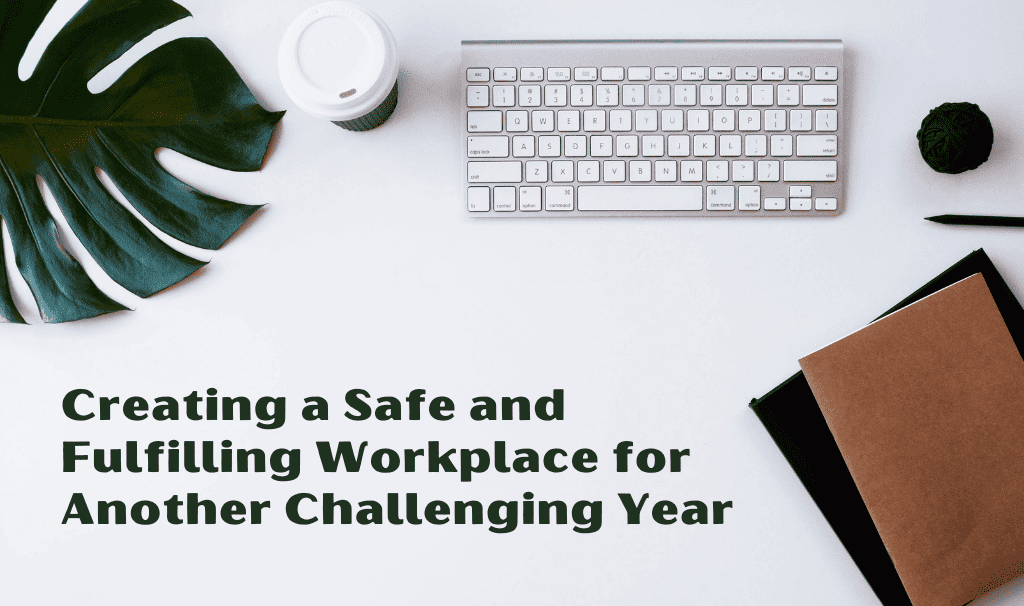
As we enter the new year, the risks of COVID-19 may recede, but the trauma, pain, and disruptions of these past two years will still be with us, affecting our lives and our work. We’ve all struggled, sometimes in ways we can’t pinpoint.
In her book Bearing the Unbearable, Joanne Cacciatore describes grief as “a process of expansion and contraction.” Cacciatore explains that in a moment of contraction, we may feel unsteady and unsafe, and we “feel the call to self-protect.” In a moment of expansion, we “become more willing to venture out and explore” and “take risks.” This process isn’t exclusive to grief, of course. Whatever the cause, many of us right now are experiencing one or the other, or both.
A recent guest on the HR Social Hour Half Hour Podcast, Julie Turney, founder and CEO of HR@Heart Consulting, observed that people today recognize that they deserve better, and they are demanding better. They are less willing to settle, less comfortable with the way things are. People are fleeing jobs that are physically or psychologically unsafe. Others are chasing their dreams with a newfound passion.
For the foreseeable future, people will seek environments that are both flexible and strong enough to support a process of contraction and expansion. They will desire work that gives them a safe place to be and a fulfilling place to go. They will crave a future they can own and a course they can chart, and their jobs will either help or hinder them. Jobs that help them will be in high demand.
Fortunately, such sought-after work environments can be achieved with some basic practices. Let’s look at some.
Talk About the Future
Don’t assume an employee expressing conflicting feelings isn’t up for the task at hand. In normal times, it’s natural to second guess big decisions, and these are not normal times. Some employees may need a little extra encouragement. Others may truly be happier continuing to do what they’ve been doing.
Through these conversations, managers can help their people make informed decisions about their future that make sense for them and for the company.
Don’t Be Afraid to Set Deadlines
Provide Grief Support
Take Care of Yourself and Your HR Leaders
Don’t Take Departures Personally or Draw the Wrong Conclusions
When an employee leaves an organization, it’s always a good idea to understand why and consider what changes you could have made to keep them. What you learn may not persuade that employee to reconsider their departure, but it may assist you in keeping others. That said, sometimes employees quit and there’s nothing you could have done to convince them to stay. The best possible workplace in the world will still see people go elsewhere simply because those people want a change or because of circumstances beyond their control.
When your employees tell you they’re leaving, do your due diligence to find out why, but don’t overthink their departures or take them personally. If everything was good and they still left, that just means everything was good and they still left. It doesn’t mean that you didn’t do enough or should have done something differently. Believe in the work you’re doing. Be kind to yourself. As Lars Schmidt says in his book Redefining HR, “we’re on the front lines of the highest of highs and the lowest of lows of all our employees.”
Inspire Hope
Whether we feel the strong urge to self-protect or we’re jumping out of our seat to pursue a risky venture, we could all use a little hope. The philosopher David Utsler writes, “Hope offers no guarantees. Hope does not promise that life or the world will get better. Hope only insists on the possibility.”
You can inspire hope by expanding the scope of what is possible for your employees. Talk with them about their dreams and ambitions so they can imagine what possibilities lie before them. Talk about where your company is going and what you’ll need from your employees. Help them envision a place where they can explore, take risks, and be supported.
Then work together to get there.
Our tools are designed to streamline your workday.
Schedule a Demo and see how AllMyHR works for you.



